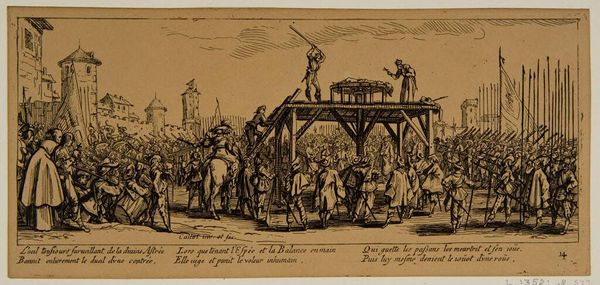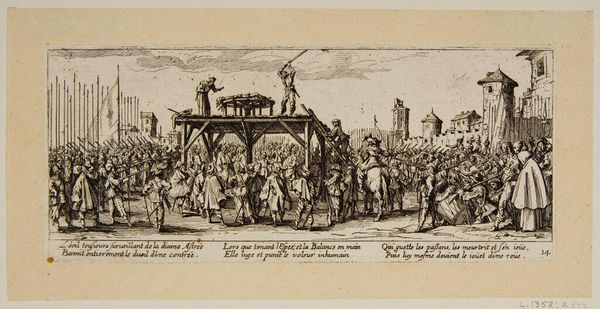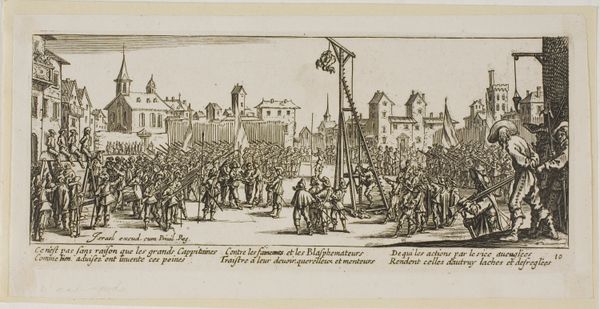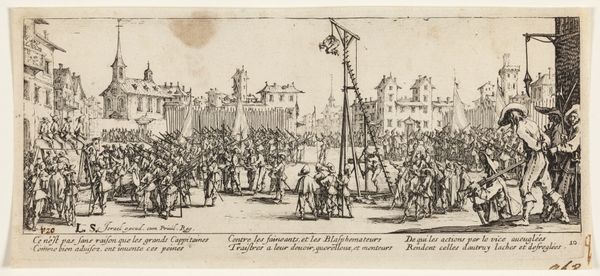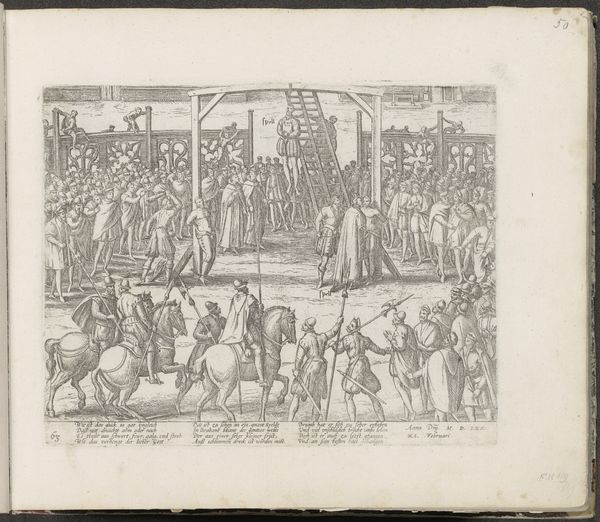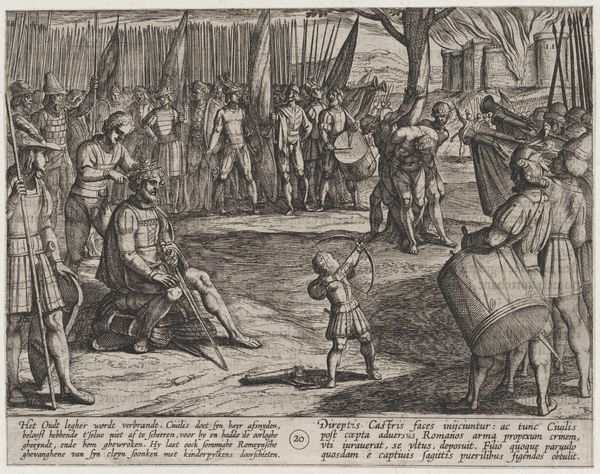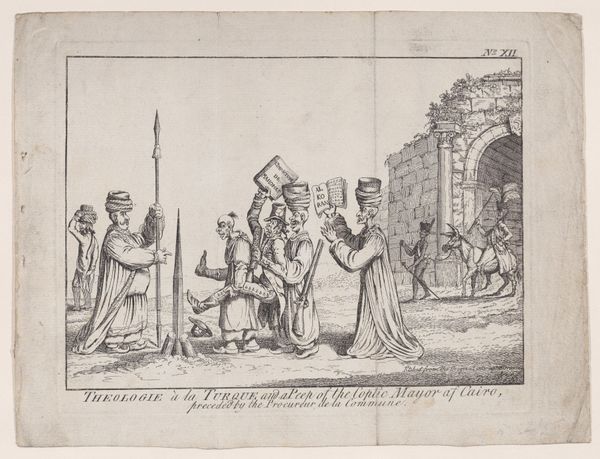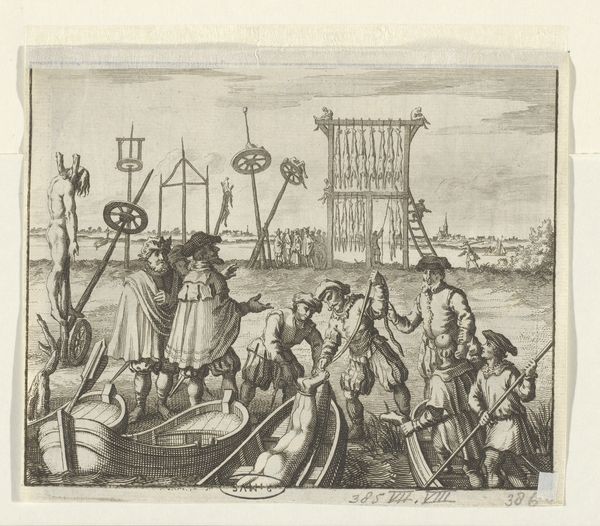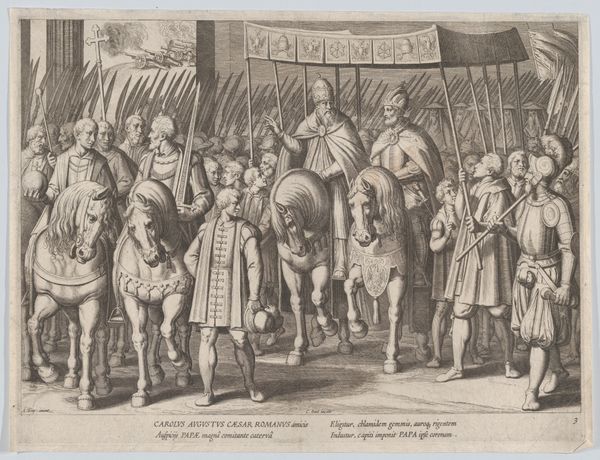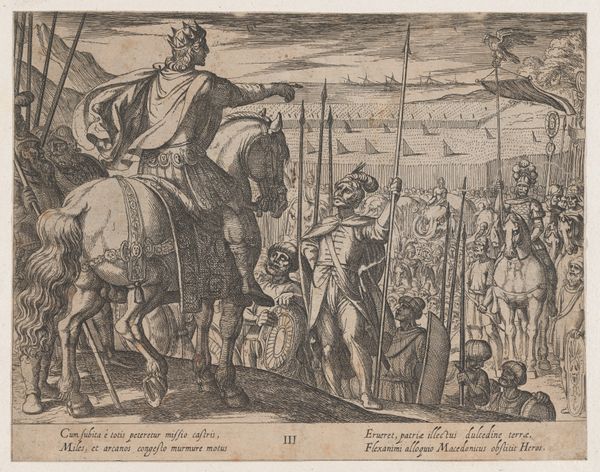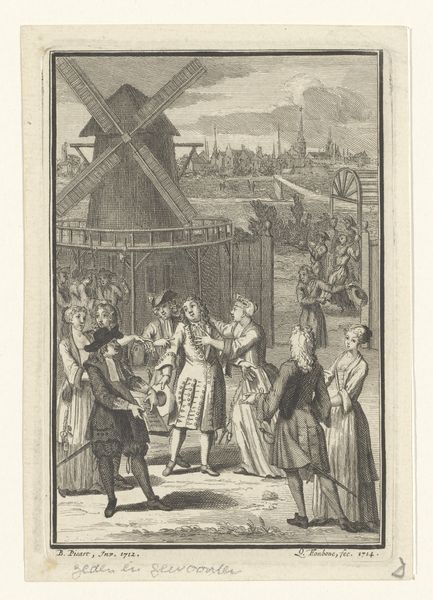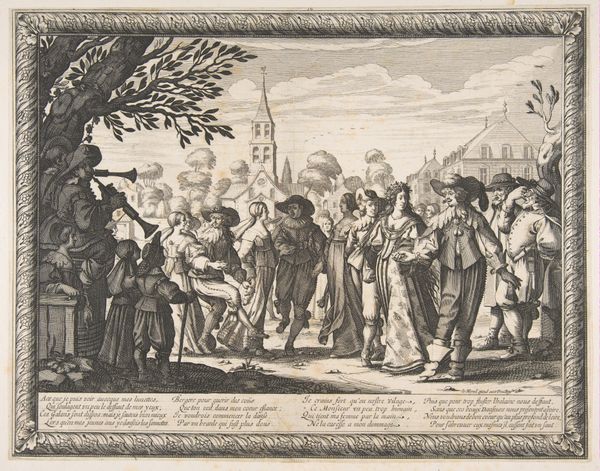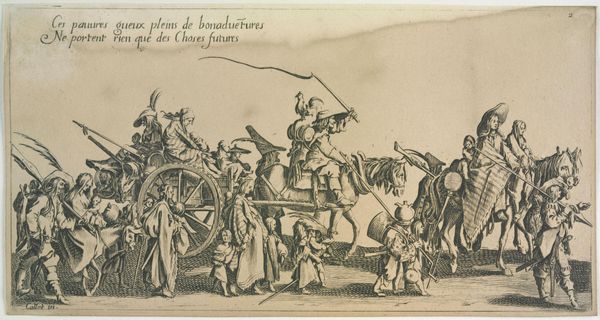
print, engraving
#
narrative-art
#
baroque
# print
#
figuration
#
history-painting
#
engraving
Dimensions: 83 mm (height) x 188 mm (width) (plademaal)
Editor: This is Jacques Callot’s engraving, "Afstraffelse ved radbrækning," or "Punishment by breaking on the wheel," from 1633. It's…intense. There’s a huge crowd scene, a city in the background, and then this raised platform where some terrible act is about to occur. What can you tell me about this print? Curator: Well, immediately, I’m drawn to consider the means of its production. Callot, a master engraver, is using a *burin* to incise lines into a copper plate. Think about the labor involved, the precision required. This isn’t some spontaneous gesture; it’s a carefully constructed object intended for mass dissemination. Consider that: witnessing and participating from a distance. Editor: Mass dissemination of, essentially, a public execution? Curator: Exactly! The engraving becomes a commodity, consumed by an audience eager for these dramatic depictions of justice, or, depending on their perspective, a condemnation of unjust power. What materials would the crowd participating need for the even: food, beverage, clothing? How are those made, by who, what do those making those items think about what the buyers intend? Editor: So, the print is both a work of art and a form of propaganda? Curator: It’s both, and neither. Callot’s craftsmanship elevates it beyond simple propaganda, but the subject matter forces us to confront the social and political realities of 17th-century justice, particularly the production of justice. Does the starkness of the medium enhance the sense of brutality, or does it create a necessary distance for reflection? Editor: I never considered the connection between the engraving process itself and the subject being portrayed. I suppose art is not divorced from labor after all! Curator: Precisely! The materials and means of production are inextricably linked to the artwork’s meaning and its role within society. Editor: Thanks, that's given me a whole new perspective on how to view the piece. I think understanding the material process really makes a big difference.
Comments
No comments
Be the first to comment and join the conversation on the ultimate creative platform.

